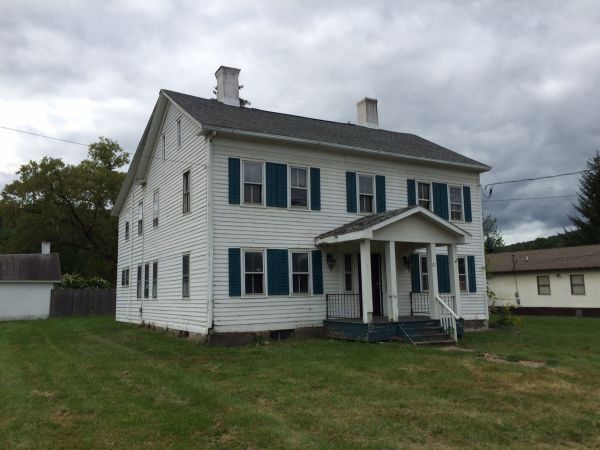The Squire Frederick Hotchkiss House was built in 1832 as a Federal style building. It was built on land from the estate of Frederick Hotchkiss’ father. The structure is 3800 sq. ft. and has two additions. The building was modeled after the possibly no longer extant, Dyer Hotchkiss House in Waterbury, Connecticut. The house is also similar to the National Register listed, Prospect Historical Society building, which was originally constructed in 1818 by Frederick for his oldest son, David, in Prospect, Connecticut.
Frederick Hotchkiss (1768-1846) was born in Prospect, Connecticut. He was the oldest son of David Hotchkiss and his first wife Abigail Douglas. Because of the Hotchkiss’ contributions, there is a Hotchkiss Family Association in Prospect. Frederick Hotchkiss’ father, David Hotchkiss, was also one of Windsor Village’s founders. He moved with his younger sons Amraphael, Cyrus, Charles, and Gilead to Windsor in 1789 and they were among the village’s earliest Euro-American settlers. Frederick followed with his immediate family to Windsor in 1826.
In January 1831, Frederick paid Stephen Farnham and James C. Chapel $235 and provided them boarding to start building the Squire Frederick Hotchkiss House based on plans from the Dyer Hotchkiss house in Waterbury, Connecticut. Construction was set for completion by October 1832. The building plans specified a structure 25 feet by 36 feet and two stories high with an addition of 20 feet square, 1 ½ stories for a kitchen buttery sink room entry.
The building was constructed in typical Federal style. The main block is a heavy timber framed structure on a stone foundation. It stands two and one-half stories tall. It is five bays wide with a center entry and two bays deep. There are two interior chimneys. Since the original construction, there were several alterations during the twentieth century. Despite these alterations that include the 1978 addition of a small front porch, replacement window sash, and some loss of interior finishes; the Frederick Hotchkiss house largely reflects its appearance during Frederick’s time. Notable architectural features include a front door surround with side lights and four pilasters that are similar in style to the David Hotchkiss’ house entry, a wide cornice with prominent returns, an original fireplace and chimney of handmade bricks supported by a cradle of pinned hand hewn beams, and some original interior finishes such as the wide plank floors.
The Hotchkiss family made numerous contributions to the Windsor community in the late eighteenth and the nineteenth century. David donated the land near the center of the settlement for a village green in the New England style. He and his sons also constructed a church on the green. The brothers built bridges and mills, and served in a variety of civic roles; including serving as constable, postmaster, and pathmaster. Frederick Hotchkiss was also involved in testifying to the United States Congress on behalf of the Windsor community in matters relating to abolition and the free soil movement. Frederick later drowned in an attempt to cross Occanum Creek.
The Frederick Hotchkiss house is free if you move the entire house or dismantle and remove the parts. The new owner must be qualified and insured to move the house or hire a qualified and insured house mover. Any development plans for the building must also be approved by the required authorities. This house will no longer be available by the end of the year.
CONTACT INFO
Chris Gross
Owner/Broker
Upper Delaware Real Estate
607-637-5588
This email address is being protected from spambots. You need JavaScript enabled to view it.

